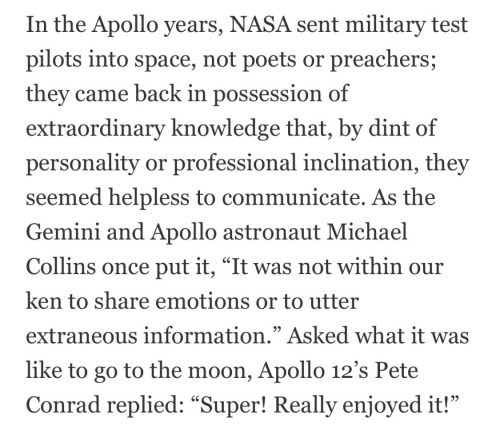Voyager 2: Rings Of Neptune (August 1989)

Voyager 2: Rings of Neptune (August 1989)
More Posts from Ad-astra-affecte-spe and Others

What did Hubble see on your birthday? (x)
Dec. 3, 2009 - Stellar Jewel Box NGC 3603

Setting Sail to Travel Through Space: 5 Things to Know about our New Mission
Our Advanced Composite Solar Sail System will launch aboard Rocket Lab’s Electron rocket from the company’s Launch Complex 1 in Māhia, New Zealand no earlier than April 23, at 6 p.m. EDT. This mission will demonstrate the use of innovative materials and structures to deploy a next-generation solar sail from a CubeSat in low Earth orbit.
Here are five things to know about this upcoming mission:
1. Sailing on Sunshine
Solar sails use the pressure of sunlight for propulsion much like sailboats harness the wind, eliminating the need for rocket fuel after the spacecraft has launched. If all goes according to plan, this technology demonstration will help us test how the solar sail shape and design work in different orbits.

2. Small Package, Big Impact
The Advanced Composite Solar Sail System spacecraft is a CubeSat the size of a microwave, but when the package inside is fully unfurled, it will measure about 860 square feet (80 square meters) which is about the size of six parking spots. Once fully deployed, it will be the biggest, functional solar sail system – capable of controlled propulsion maneuvers – to be tested in space.

3. Second NASA Solar Sail in Space
If successful, the Advanced Composite Solar Sail System will be the second NASA solar sail to deploy in space, and not only will it be much larger, but this system will also test navigation capabilities to change the spacecraft’s orbit. This will help us gather data for future missions with even larger sails.

4. BOOM: Stronger, Lighter Booms
Just like a sailboat mast supports its cloth sails, a solar sail has support beams called booms that provide structure. The Advanced Composite Solar Sail System mission’s primary objective is to deploy a new type of boom. These booms are made from flexible polymer and carbon fiber materials that are stiffer and 75% lighter than previous boom designs. They can also be flattened and rolled like a tape measure. Two booms spanning the diagonal of the square (23 feet or about 7 meters in length) could be rolled up and fit into the palm of your hand!

5. It’s a bird...it’s a plane...it’s our solar sail!
About one to two months after launch, the Advanced Composite Solar Sail System spacecraft will deploy its booms and unfurl its solar sail. Because of its large size and reflective material, the spacecraft may be visible from Earth with the naked eye if the lighting conditions and orientation are just right!
To learn more about this mission that will inform future space travel and expand our understanding of our Sun and solar system, visit https://www.nasa.gov/mission/acs3/.
Make sure to follow us on Tumblr for your regular dose of space!
NATIVE CARBON DIOXIDE FOUND ON JUPITER’S MOON EUROPA


The California Nebula, NGC 1499 // Alex Weinstein
The bright star to the right is Menkib (ξ Persei), whose name comes from the Arabic phrase mankib al Thurayya meaning "shoulder of the Pleiades".

The glittering globular cluster Terzan 12 — a vast, tightly bound collection of stars — fills the frame of this image from the NASA/ESA Hubble Space Telescope. This star-studded stellar census comes from a string of observations that aim to systematically explore globular clusters located towards the centre of our galaxy, such as this one in the constellation Sagittarius. The locations of these globular clusters — deep in the Milky Way galaxy — mean that they are shrouded in gas and dust, which can block or alter the wavelengths of starlight emanating from the clusters.
Here, astronomers were able to sidestep the effect of gas and dust by comparing the new observations made with the razor-sharp vision of Hubble's Advanced Camera for Surveys and Wide-Field Camera 3 with pre-existing images. Their observations should shed light on the relation between age and composition in the Milky Way’s innermost globular clusters.
[Image Description: The frame is completely filled with bright stars, ranging from tiny dots to large, shining stars with prominent spikes. In the lower-right the stars come together in the core of the star cluster, making the brightest and densest area of the image. The background varies from darker and warmer in colour, to brighter and paler where there are more stars.]Credit:
ESA/Hubble & NASA, R. Cohen (Rutgers University)


For ten years the stargazer dreamed of taking a picture like this. The dreamer knew that the White Desert National Park in Egypt's Western Desert is a picturesque place hosting numerous chalk formations sculpted into surreal structures by a sandy wind. The dreamer knew that the sky above could be impressively dark on a clear moonless night, showing highlights such as the central band of our Milky Way Galaxy in impressive color and detail. So the dreamer invited an even more experienced astrophotographer to spend three weeks together in the desert and plan the composite images that needed to be taken and processed to create the dream image. Over three days in mid-March, the base images were taken, all with the same camera and from the same location. The impressive result is featured here, with the dreamer -- proudly wearing a traditional Bedouin galabyia -- pictured in the foreground.
Two spiral galaxies, NGC 6040 and NGC 6039, are merging together at the right side of this Hubble image. NGC 6039 is seen face-on and is circular in shape. NGC 6040 seems to lie in front of the first one. In the lower-left corner, cut off by the frame, the elliptical galaxy NGC 6041 — a central member of the galaxy cluster that Arp 122 resides in — appears as light radiating from a point. The color image was made from separate exposures taken in the visible and infrared regions


IC 2087 Taurus Molecular Cloud © Nik Szymanek

Did Betelgeuse Swallow a Binary Partner ?
The star hit the news back in late 2019 when it suddenly dimmed in an event known as the great dimming, and since there's been a lot of papers and theories to what really happened.

At the time, there was talk of supernova from a minority, while most astronomers reserved judgement on this, which turned out to be the right call, although even they had to admit bafflement at why this star suddenly become so dim.
Since, then the prevailing and mostly accepted theory is that the star ejected a huge amount of material which included carbon and thus concealed parts of the star, causing the dimming.

A new paper from Department of Physics and Astronomy at Louisiana State University has looked at another idea, that at some point in the recent past the star had consumed a binary partner.
While the study can only make suggestions at this point, some of the observed facts about Betelgeuse certainly fit the bill. The star spins very quickly for an old supersized red giant, even faster than our own sun, and the team believe a past consumption may have transferred energy to the star, accounting for this spin rate.
The next thing was that the super giant star didn't just dim, it rebounded and actually brightened considerably too. These events of material coming to the surface and briefly causing a brightening effect are predicted through models of this occurrence.
The star is not likely to go supernova anytime soon, but I would put bets on the likelihood of the star surprising us once again in the coming decades.

-
 statesofneptune liked this · 6 months ago
statesofneptune liked this · 6 months ago -
 melocosmos reblogged this · 6 months ago
melocosmos reblogged this · 6 months ago -
 melocosmos liked this · 6 months ago
melocosmos liked this · 6 months ago -
 adventures-of-silly-guy liked this · 10 months ago
adventures-of-silly-guy liked this · 10 months ago -
 smellslikesouls liked this · 11 months ago
smellslikesouls liked this · 11 months ago -
 piscedoff reblogged this · 11 months ago
piscedoff reblogged this · 11 months ago -
 restinpiss reblogged this · 11 months ago
restinpiss reblogged this · 11 months ago -
 bi-hans liked this · 1 year ago
bi-hans liked this · 1 year ago -
 deadal1enx3 liked this · 1 year ago
deadal1enx3 liked this · 1 year ago -
 the-joysof-life liked this · 1 year ago
the-joysof-life liked this · 1 year ago -
 franken-fan reblogged this · 1 year ago
franken-fan reblogged this · 1 year ago -
 ad-astra-affecte-spe reblogged this · 1 year ago
ad-astra-affecte-spe reblogged this · 1 year ago -
 the-yearning-astronaut liked this · 1 year ago
the-yearning-astronaut liked this · 1 year ago -
 yourfavhasscurvy reblogged this · 1 year ago
yourfavhasscurvy reblogged this · 1 year ago -
 frankietankbaker liked this · 1 year ago
frankietankbaker liked this · 1 year ago -
 lilranchdip liked this · 1 year ago
lilranchdip liked this · 1 year ago -
 the-lushs-one-always reblogged this · 1 year ago
the-lushs-one-always reblogged this · 1 year ago -
 etceterodactyl reblogged this · 1 year ago
etceterodactyl reblogged this · 1 year ago -
 andromedalone reblogged this · 1 year ago
andromedalone reblogged this · 1 year ago -
 andromedalone liked this · 1 year ago
andromedalone liked this · 1 year ago -
 sketo-parapono reblogged this · 1 year ago
sketo-parapono reblogged this · 1 year ago -
 lmimash liked this · 1 year ago
lmimash liked this · 1 year ago -
 transillidan reblogged this · 1 year ago
transillidan reblogged this · 1 year ago -
 possenrreisser liked this · 1 year ago
possenrreisser liked this · 1 year ago -
 shred-my-anxiety liked this · 1 year ago
shred-my-anxiety liked this · 1 year ago -
 dragonageorigins reblogged this · 1 year ago
dragonageorigins reblogged this · 1 year ago -
 dragonageorigins liked this · 1 year ago
dragonageorigins liked this · 1 year ago -
 hugovlad reblogged this · 1 year ago
hugovlad reblogged this · 1 year ago -
 evelovesrayne reblogged this · 1 year ago
evelovesrayne reblogged this · 1 year ago -
 existential-dread-in-the-am reblogged this · 1 year ago
existential-dread-in-the-am reblogged this · 1 year ago -
 g4laxy-drag0n liked this · 1 year ago
g4laxy-drag0n liked this · 1 year ago -
 mulledboyfriend liked this · 1 year ago
mulledboyfriend liked this · 1 year ago -
 midnight-cowboy5okinawa liked this · 1 year ago
midnight-cowboy5okinawa liked this · 1 year ago -
 westburial liked this · 1 year ago
westburial liked this · 1 year ago -
 spacerat-05 reblogged this · 1 year ago
spacerat-05 reblogged this · 1 year ago -
 yokusounidreambox liked this · 1 year ago
yokusounidreambox liked this · 1 year ago -
 space-and-place reblogged this · 1 year ago
space-and-place reblogged this · 1 year ago -
 scarletfasinera reblogged this · 1 year ago
scarletfasinera reblogged this · 1 year ago -
 icnclsm reblogged this · 1 year ago
icnclsm reblogged this · 1 year ago

★•Astronomy, Physics, and Aerospace•★ Original and Reblogged Content curated by a NASA Solar System Ambassador
204 posts
